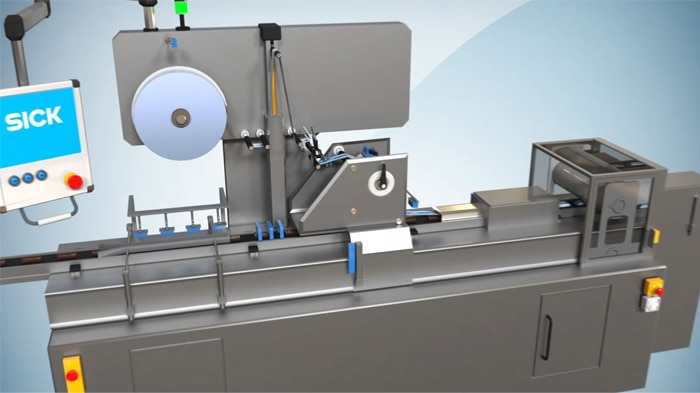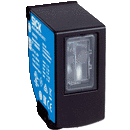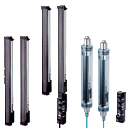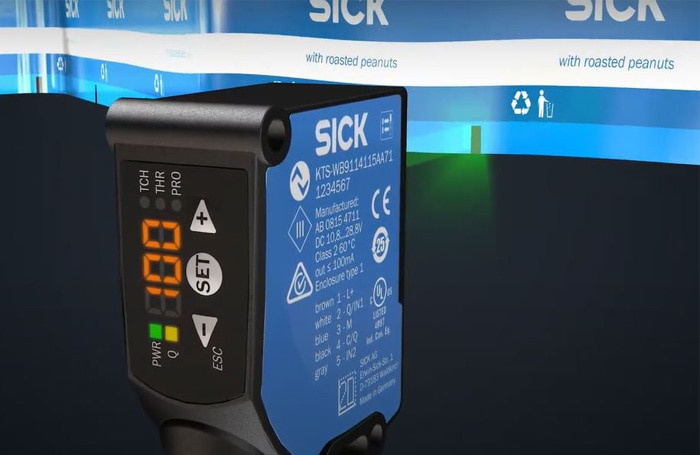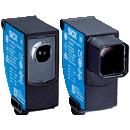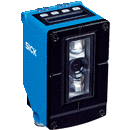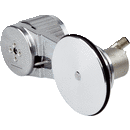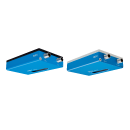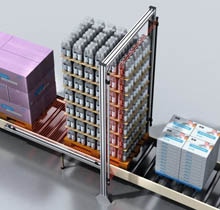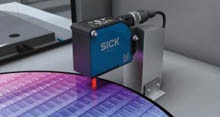In the consumer goods industry, especially in printing and packaging, the processing of continuous webs is a real challenge. Exact guidance of the material web, correct material tension in the machine and cutting the web at the right spot at the end are all essential for efficient and precise process results. SICK solutions help with every one of these process steps – for example with registration sensors or automation light grids which were made for such tasks.
Permanent control of continuous webs - so nothing goes wrong
Web control, web edge monitoring and web width measurement
The web must be correctly guided from the drum to the processing area all the way to the further processing point. The AS30 array sensors offer assistance here. They work on a scanning principle and use a line of light to reliably detect the finest of edges based on grayscale differences. The position of the web in a cross offset is detected with a repeatability of up to 30 µm. The position is issued via an analog output or IO-Link. Operation with retro-reflectors in the background is possible with certain device variants to enable the processing of transparent material webs as well. This allows for reliable detection of the edges of transparent webs.
Users who would like to monitor both web edges or process many different width formats with one device now have a flexible and versatile solution for web running control and quality assurance with the MLG-2 WebChecker automation light grid. Features such as the patented cross beam technology as well as light intensity measurement and individual evaluation of up to every 500 beams result in an accuracy of ± 0.3 mm and a resolution of 0.1 mm per web edge, thereby ensuring highly precise measurement of the web width. At the same time, the MLG-2 WebChecker generates position information for both web edges. If these move out of the specified target positions, this is output to the machine controller via switching outputs of the light grid. Within a selected detection range of 150 mm to 3,150 mm, the user can also monitor smaller formats without having to readjust sensors or reparameterize the light grid for the format change.
Monitoring of web tension
A so-called dancer serves to compensate for irregularities when unwinding the packaging foil and to apply a constant web tension for the infeed process. To do this, the dancer position is regulated to its center position. The MPS-T position sensors attached to the pneumatic cylinder accurately detect any deviations from this position. The web then runs precisely, with the correct tension, and defects such as those that can arise with imprecise sealing of pillow bags do not occur.
Cutting – with or without print marks
In addition to correct guidance and monitoring of the web tension, precise cutting of endless web for the packing or product unit is the end of the process chain. To ensure cutting in the correct location, the cutting position is indicated by a print mark on the web.
The KTS Prime contrast sensor is perfectly suited for the detection of print marks. Even at very high speeds, it reliably detects grayscale variations between the mark and the background on matte, shiny and transparent surfaces. The KTS Prime, with its modern design, high-precision RGB LED and VISTAL® housing, impresses in print mark detection with TwinEye technology®, color mode, high switching frequency, excellent grayscale resolution, 7-segment display and IO-Link. The response time of 10 µs and a jitter of 5 µs ensure accurate detection of contrast differences, even at high machine speeds. Thanks to various teach-in processes, integrated color mode and variable sensor adjustment, commissioning is more flexible and the processes more stable. The KTS Prime provides additional diagnosis and analysis data via IO-Link. This can lower costs caused by scrap and increases productivity.
The PS30 pattern sensor enables precise cutting of endless webs without making any print marks. The PS30 locates the cutting position precisely without print marks, even at high process speeds of up to 10 m/s. The sensor reads a pattern based only on the contrasts in the printed image and calculates the position sought from that pattern. This opens up a whole new world of design freedom for more attractive labels.
Accurately detect speed and position – with or without contact
To enable high process quality, especially in cutting or printing processes, the speed of the foil web must be detected. Encoders, measuring wheel systems and SPEETEC 1D devices enable accurate measurement on foil webs, thus ensuing high quality and productivity from fully automated processes.
Measuring wheel systems – proven measurement on foil webs
The SPEETEC 1D – gentle on sensitive surfaces
Read more
I want to stay up to date and regularly be informed about new articles!

